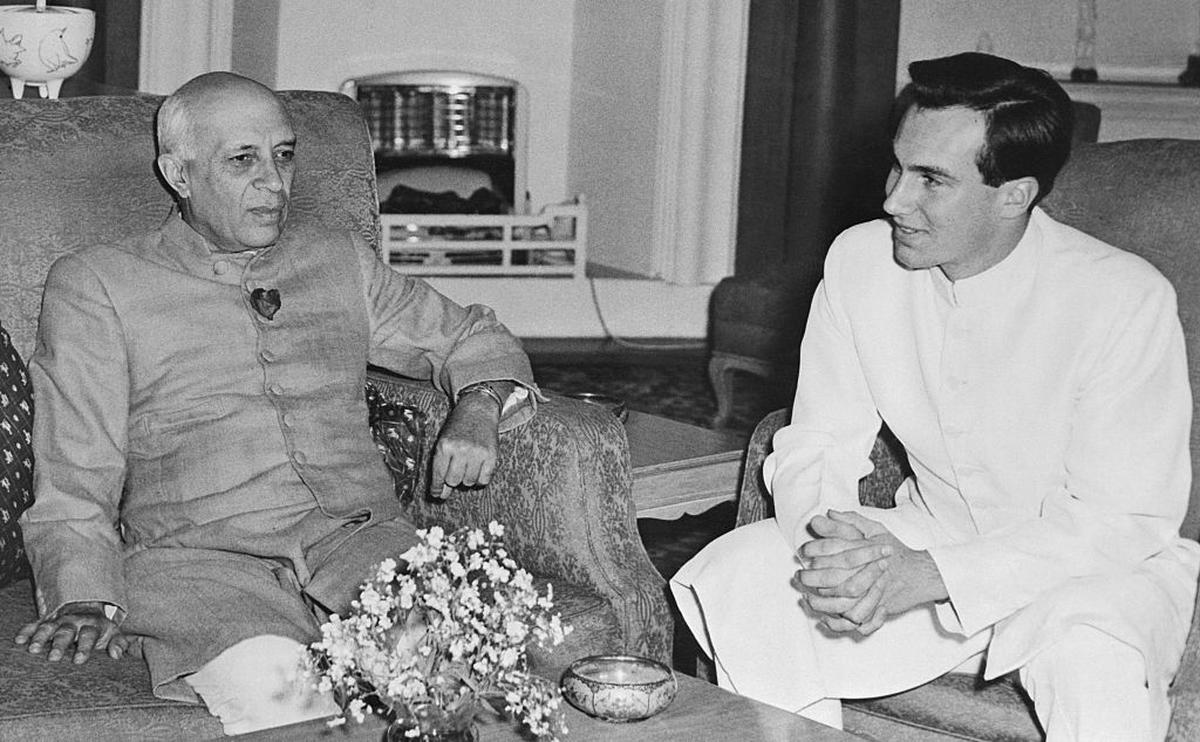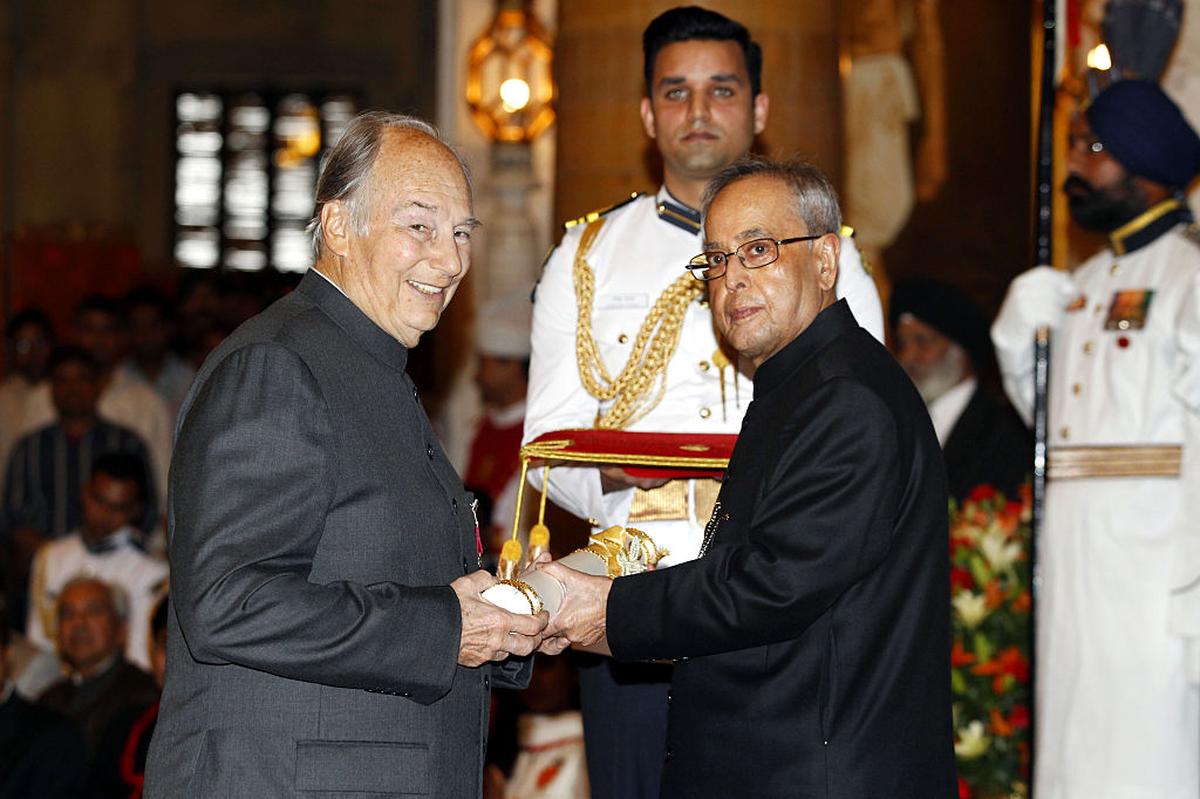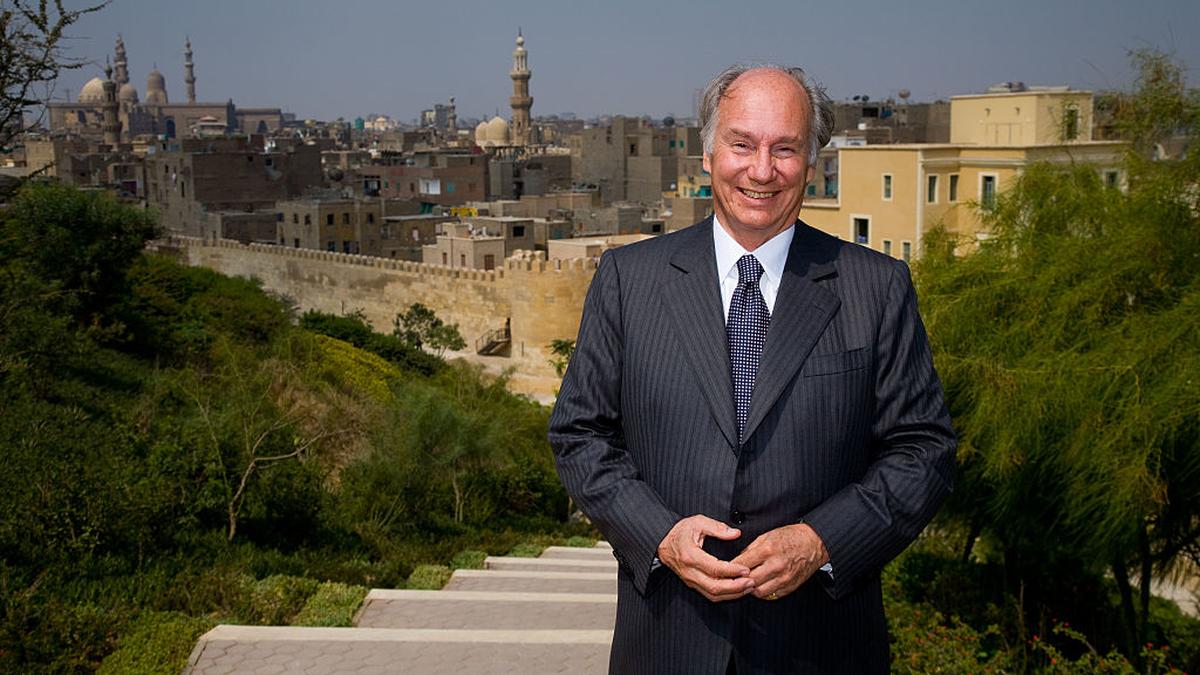Prince Karim Al-Hussaini Aga Khan in Cairo
| Photo Credit: Getty Images
“The Imam is dead, long live the Imam!” With these words, Prince Aly Khan, the man who would have been Imam, embraced his son, the 20-year-old Prince Karim Al-Hussaini, and solemnly acknowledged his ascension as the spiritual heir and leader of the Nizari Ismailis in Versoix, near Geneva, on July 12, 1957.
It was only the second time in the unbroken lineage of the prominent Shia sect that a son had been bypassed. The family traces their descent directly from Prophet Muhammad and the Aga Khan is treated as a head of state.

The late Aga Khan III was very clear about his choice. He had written in his will: “…in very recent years due to the great changes which have taken place including the discoveries of atomic science, I am convinced that it is in the best interest of the Shia Muslim Ismailia Community that I should be succeeded by a young man who has been brought up and developed during recent years and in the midst of the new age and who brings a new outlook on life to his office as Imam.”
He also added that the young Prince Karim, who had studied at Institut Le Rosey, an exclusive boarding school for boys near Geneva, with a winter retreat in the ski resort town of Gstaad, would have as an official mentor, his grandmother Begum Om Habbibeh Aga Khan, a Swiss citizen by birth. Prince Karim went on to Harvard to complete his studies. Thanks to his grandfather’s will, he was hailed as the “Imam of the Atomic Age”. He passed away in Lisbon, Portugal, on February 4, and was buried at the Mausoleum of Aga Khan in Egypt, also his grandfather’s resting place.
A home in Mumbai

The Aga Khan IV (right) with Prime Minister Jawaharlal Nehru in New Delhi, 1958.
| Photo Credit:
Bettmann Archive
The title of Aga Khan was first bestowed upon Hasan Ali Shah (1804-1881), the 46th Imam of the Nizari Ismailis, by the Iranian king Fath-Ali Shah Qajar in the 19th century. Many years later, Hasan Ali relocated to Bombay after spending a large part of his life in Afghanistan and Sindh in Pakistan. His mausoleum in the Mazgaon docks of Mumbai was once a well-kept place of pilgrimage.
It’s perhaps due to his patronage that the Ismailis in the region flourished as traders and merchants. Despite the fact that Aga Khan was revered as the spiritual heir of the Ismailis, he did not actually rule a country or province. Yet, by the time of Aga Khan III, his fame was such that at the golden jubilee celebrations of his accession in Bombay and later in Nairobi in 1936, the whole world watched. In both places, he was publicly weighed in gold donated by the Ismaili followers.
The proceeds were apparently used to further the fortunes of the community spread across the subcontinent as well as in East Africa. Ismailis traditionally give a tithe, or a percentage of their earnings, to the Imam. He returned their trust by being an exceptionally enlightened leader. Not only did he not believe in the veil or hijab for women, he insisted that girls be given equal educational opportunities.
Philanthropy in good measure
Amongst the many acts of patronage that marked the age of Aga Khan IV was the creation of the Aga Khan Development Network, described as “the largest private development network in the world”. One very well-known effort was the institution of the Aga Khan Award for Architecture. It celebrates contemporary design keeping in mind traditional crafts and building practices. The restoration of Humayun’s Tomb in New Delhi was a part of this initiative. In 2015, Aga Khan IV was bestowed with the Padma Vibhushan.

President Pranab Mukherjee (right) presents the Padma Vibhushan to Prince Karim Al-Hussaini Aga Khan in New Delhi, April 8, 2015.
| Photo Credit:
Getty Images
Given the tragedy facing displaced people today, one has to also mention how, during the Idi Amin years in Uganda, when thousands of Ismailis faced eviction from the country, Aga Khan IV found a willing friend in then president of Canada Pierre Trudeau, whose government allowed the Ismailis to immigrate. People from East Africa and Burma are also said to have been relocated by the Aga Khan’s initiative.
Prince Karim, mindful of his grandfather’s injunctions, proved to be an exemplary Imam by the time he died in Portugal at 88. In 1969, he married Sarah Frances Croker Poole, his first wife, who became Begum Salimah. Their son, Rahim Al-Hussaini, has now become the 50th Imam and Aga Khan V.
The writer is a Chennai-based critic and cultural commentator.
Published – February 13, 2025 01:22 pm IST
